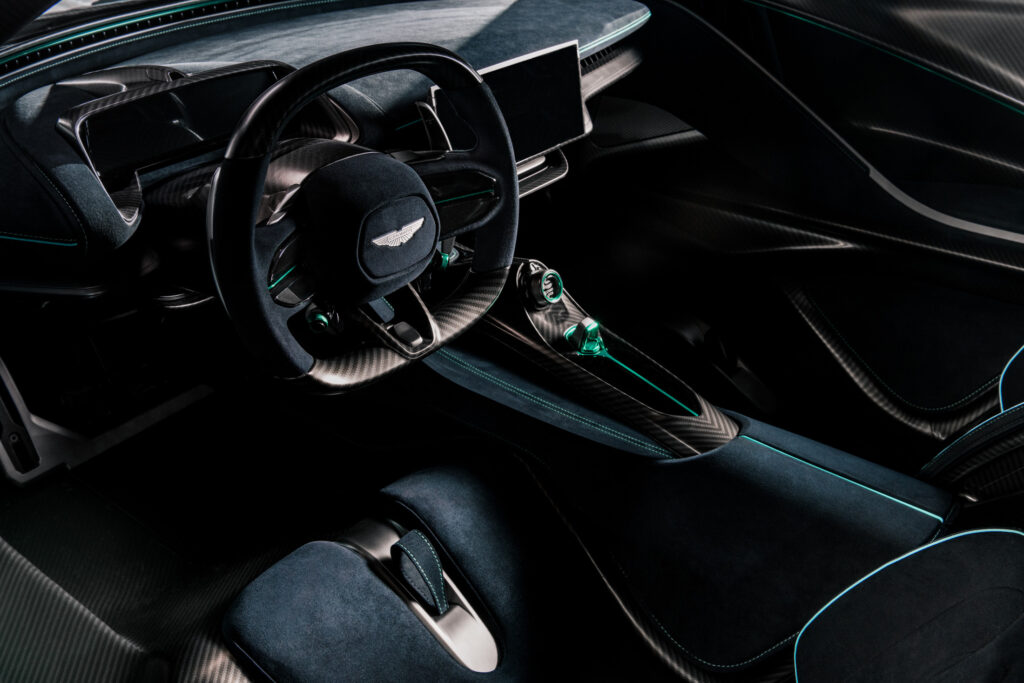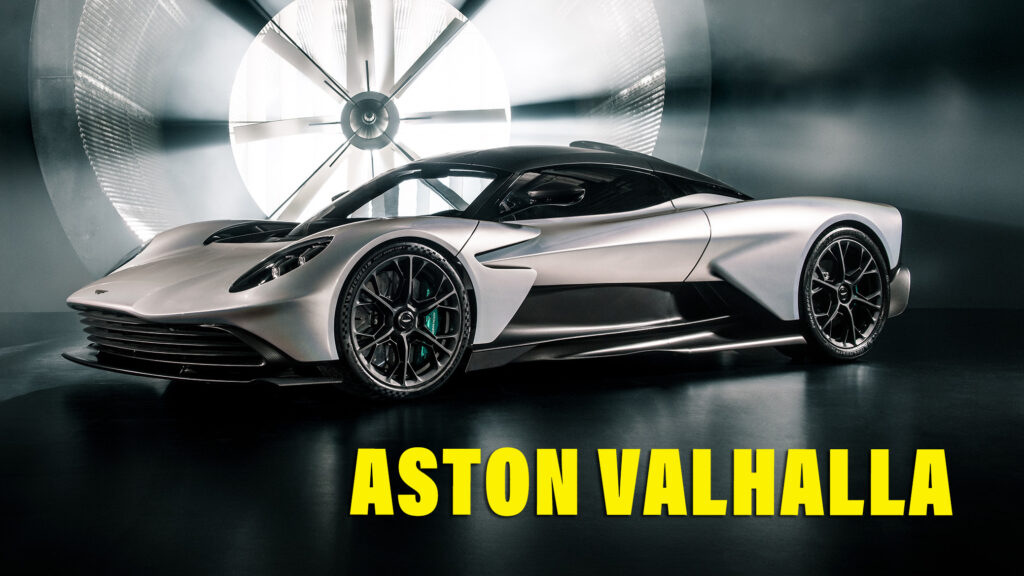Aston Martin loves a name that starts with a ‘V’. We’ve had Vanquish, Vantage, Valkyrie, Valour and Victor, and we should have had Valhalla by now, but that last one’s non-arrival is starting to make it look like another V-word: vaporware.
The Valhalla was revealed in 2019 with a V6 hybrid engine, but that proposed powertrain became a V8 in 2021. Over two years later, there’s still no sign of a production car and we haven’t even seen any prototypes out testing because the first running example won’t hit the road until later this year, Aston says. Perhaps surprisingly, the automaker still expects the supercar to enter production in 2024.
But that’s where the F1 connection comes in. In a press release whipped up to fend off the vaporware suspicions and bolster the Valhalla’s Ferrari-esque credentials, Aston tells us that it has buddied up to the Aston Martin Performance Technologies Formula One team to help develop the supercar’s materials, aerodynamics and driving dynamics.
And as with the development of an F1 car, much of the Valhalla can be created and honed using computer modelling and simulators. Although the first real test car won’t hit the street until later this year, Aston already knows how it will drive because it claims 90 percent of the dynamic setup has been decided using a simulator, with some of those miles handled by the F1 team’s hot shoes, Lance Stroll and Fernando Alonso.
Related: Aston Martin Drops Plan For Ferrari 296 GTB Rival

The true road miles will be more about checking that simulation data, finding out how the combined 1,323 lbs (600 kg) of downforce produced at 150 mph (240 km/h) works out in the real world and ironing out any bugs in the hybrid V8 powertrain and all-wheel drive transmission. Consisting of three e-motors and a twin-turbo, flat-plane crank V8, the package is claimed to deliver a combined 998 hp (1,012 PS), with the two front motors allowing genuine torque vectoring.
Even the driving position is claimed to give driver’s an F1 feel, having been modified with input from AMF1. The driver’s heels are raised by a false floor and the carbon bucket seat can be reclined to mimic the feel of being in a Grand Prix racer. Aston says the Valhalla will use active technologies to reduce the gap between the “Gentleman driver” and the professional one on track, but since the 999 cars will each cost upwards of $800,000 (€755k/£657k), you’re still going to need a bank balance like an F1 driver’s to take one home.














